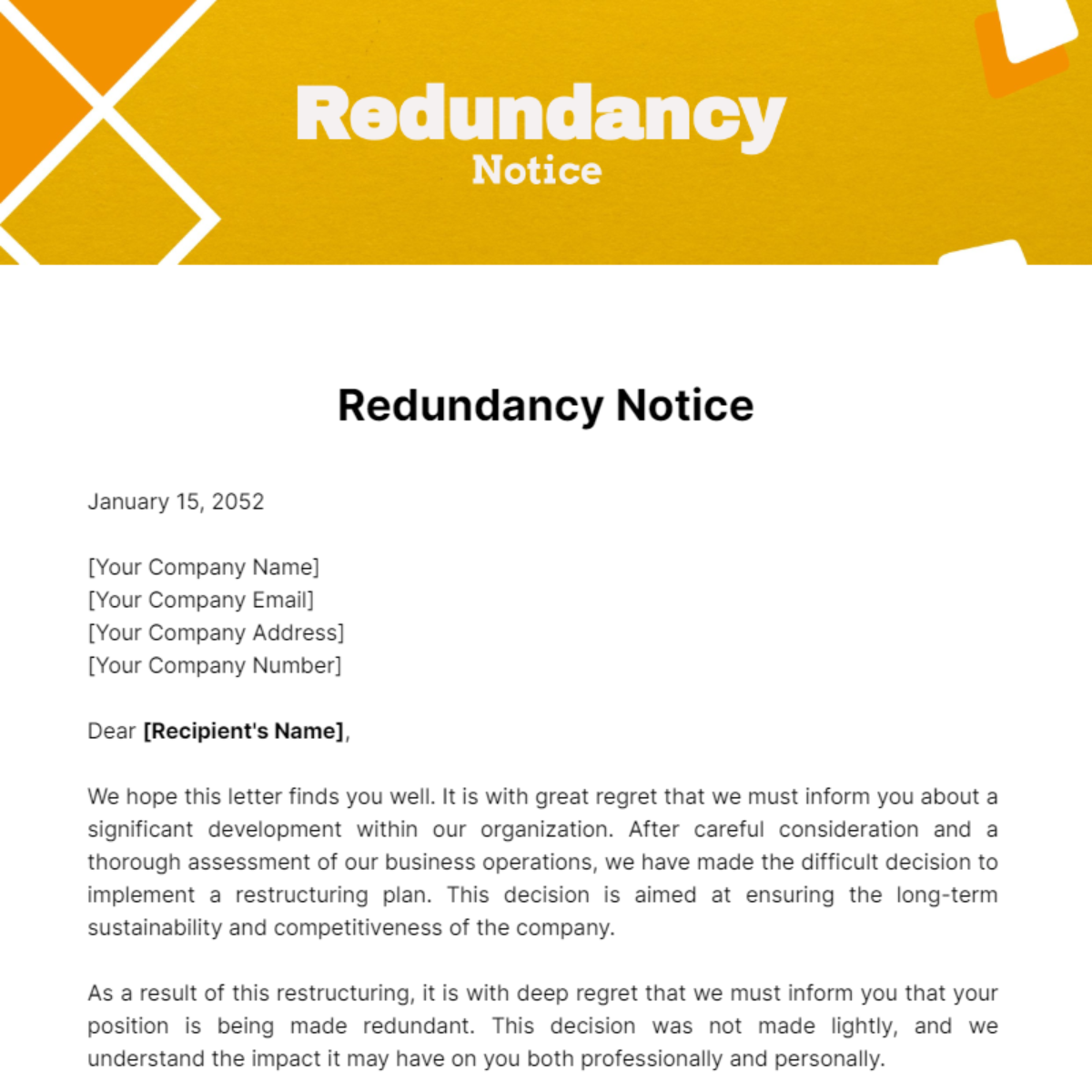If a Company Goes Bust Who Pays Redundancy? Lawful Insights for UK Worker
If a Company Goes Bust Who Pays Redundancy? Lawful Insights for UK Worker
Blog Article
Investigating the Interaction Between Business Redundancy and Business Adaptability for Future Development
In the vibrant landscape of today's business world, the complex relationship between business redundancy and organizational versatility emerges as a critical element for sustained growth and success. Companies often encounter the obstacle of striking a delicate equilibrium in between preserving a level of redundancy to reduce risks and promoting flexibility to react quickly to the ever-evolving market demands.
Relevance of Business Redundancy
Firm redundancy is a critical component that enhances organizational durability and mitigates functional dangers. By incorporating redundancy procedures within the organizational structure, companies can better endure unforeseen disturbances and variations in business setting. Redundancy serves as a critical barrier, enabling companies to adapt and respond effectively to unexpected challenges without jeopardizing necessary operations.
One key aspect of the importance of business redundancy is its duty in making sure connection throughout times of dilemma. When confronted with sudden adjustments or emergency situations, redundant systems, resources, or workers can tip in to keep vital functions and prevent prevalent disturbances. This continuity not only safeguards the business's credibility and client depend on yet additionally minimizes economic losses and operational downtime.

Methods for Organizational Flexibility

One more vital method is spending in technology and infrastructure that can sustain adaptability and scalability. Applying electronic tools, automation, and information analytics can enhance procedures, boost performance, and give valuable understandings for notified decision-making. In addition, developing versatile business frameworks that enable quick adjustments to market characteristics and consumer needs is important for remaining competitive in a quickly progressing environment. By proactively determining possible interruptions and opportunities, companies can proactively adapt and grow in an ever-changing organization landscape.
Balancing Redundancy and Adaptability
Attaining a harmonious stability between functional redundancy and organizational versatility is critical in navigating the intricacies of a vibrant service environment. Striking the right balance in between redundancy and versatility is a fragile procedure that calls for a deep understanding of the organization's goals, sector dynamics, and danger tolerance.
To achieve this equilibrium, business require to conduct routine assessments of their procedures to determine locations where redundancy is necessary for risk mitigation and where versatility can drive advancement and growth. Executing adaptable frameworks, promoting a culture of continual discovering and renovation, and urging open communication across all degrees of the organization are key strategies to integrate redundancy additional reading and flexibility properly. By aligning these 2 vital elements, firms can place themselves for sustainable growth and success in an ever-changing organization landscape.
Case Studies on Adaptation Success
In analyzing instances of successful organizational adaptation, it becomes noticeable that the interaction between functional redundancy and adaptability is a defining factor in forming resistant organizations. A DVD rental solution, Netflix showed impressive flexibility by transitioning right into a streaming platform when digitalization disrupted the sector. These case researches emphasize the relevance of operational redundancy paired with organizational versatility in cultivating long-lasting development and competition.
Building Resilience for Future Development
Building durability for future development requires a strategic alignment of operational processes with market characteristics and emerging trends. Firms need to adapt to altering environments by promoting a culture of versatility, innovation, and continuous enhancement. Strength involves not only getting better from problems yet also proactively planning for future obstacles. One essential facet of building resilience is buying robust threat administration methods to mitigate potential interruptions. This includes situation preparation, branching out supply chains, and establishing backup prepare for numerous backups (who pays redundancy money).
Furthermore, cultivating strong connections with stakeholders, such as consumers, workers, vendors, and the community, is crucial for maintaining and weathering unpredictabilities trust and support throughout additional resources stormy times. Effective interaction and transparency play a crucial role in building durability, as they help facilitate and straighten assumptions partnership in browsing uncertainties.
Additionally, companies need to prioritize discovering and growth campaigns to upskill workers and equip them great post to read with the essential tools to adjust to altering conditions. By investing in their labor force, business can improve their adaptability and agility, eventually enhancing their strength for sustainable future growth.
Verdict

In the dynamic landscape of today's organization globe, the detailed relationship in between business redundancy and business flexibility arises as a vital element for continual growth and success. Companies frequently face the difficulty of striking a fragile equilibrium in between preserving a degree of redundancy to mitigate risks and promoting versatility to react quickly to the ever-evolving market demands.To accomplish this balance, firms require to carry out regular analyses of their operations to determine areas where redundancy is required for danger mitigation and where flexibility can drive advancement and growth.In conclusion, the interaction in between company redundancy and organizational flexibility is critical for future growth. Building strength via a mix of redundancy and versatility will guarantee that firms are prepared for the difficulties of the future.
Report this page